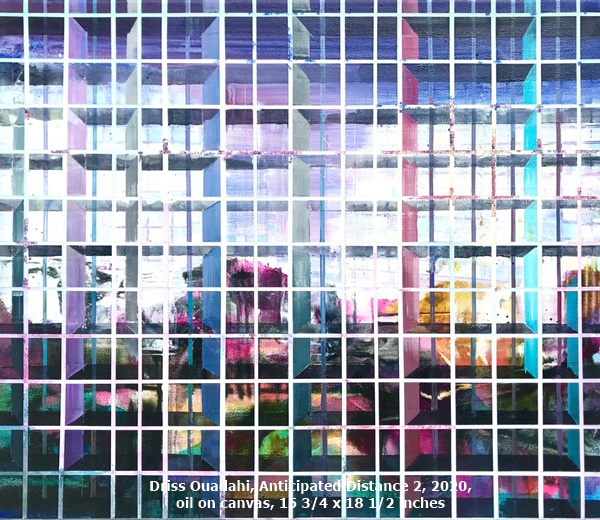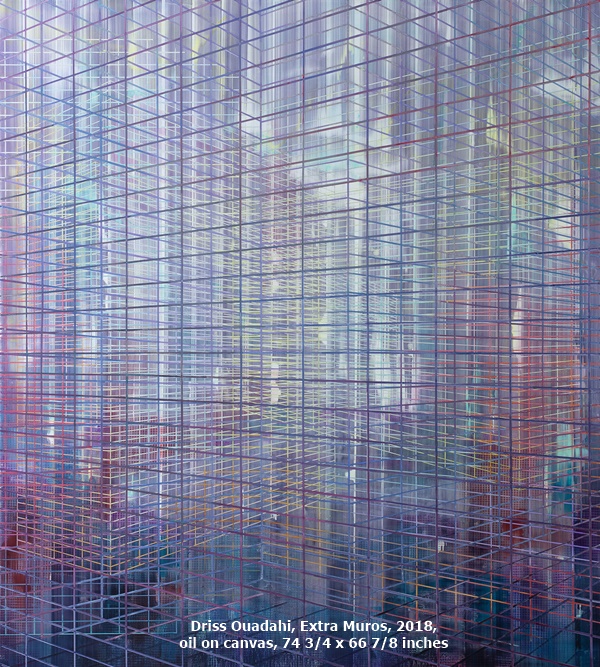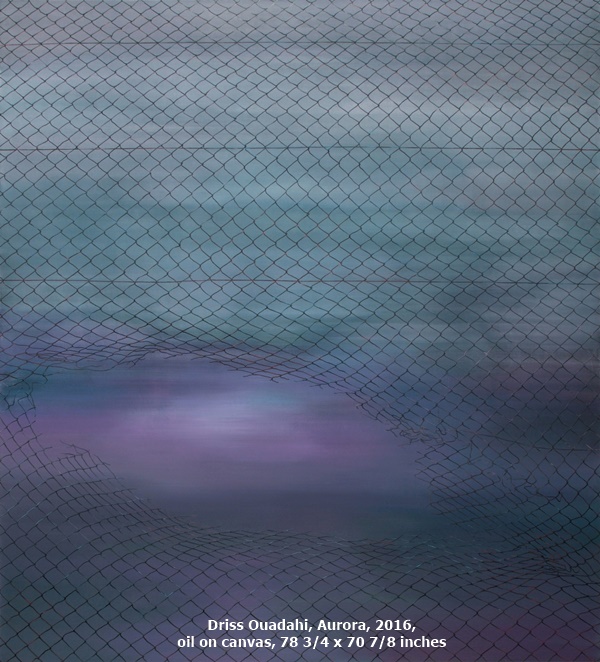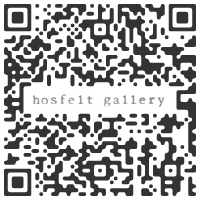Driss Ouadahi

hosfelt gallery
260 Utah Street San Francisco, CA 94103Phone: 415-495-5454 e-mail:


October 17 > November 28, 2020



Algerian Driss Ouadahi has developed a visual vocabulary that synthesizes architectural design and modernist grid painting to examine our contemporary culture's failure to address social, financial and political inequality.
Before immigrating to Europe and studying at the Kunstakademie in Düsseldorf, Ouadahi studied architecture, so it makes sense that his exploration begins with representations of the enormous public housing developments in Algiers that had been modeled on France’s habitation à loyer modéré (housing at moderated rents). In North Africa, these monoliths accommodate displaced rural populations; in Europe, they house immigrants from former colonies. They are both implements of separation and symbols of the politics of class, religion and ethnicity.
Behind concrete facades, human residents are neatly invisible. Even when the buildings are transparent, a lattice-like structure separates the viewer from the view. There are references to mashrabiya — the screened windows in traditional North African and Middle Eastern architecture — as well as to steel frame construction, scaffolding and barred windows. Boundaries abound.
Perhaps in response to his volunteer work — helping refugees from conflicts in the Middle East resettle in Germany — another of Ouadahi's recurring motifs is the chain link fence. Fencing is a very real impediment to the movement of the millions of people fleeing war and violence or seeking a better life. It’s used to shut people out, pen people in and divide “them” from “us.” The fence is a dehumanizing symbol of “otherness” — a metaphor for alienation — as ugly a signifier as it is an object. In Ouadahi’s depictions, woven steel wire is delicately-rendered against the sky. Sometimes it’s stretched taught across the picture plane as an unbroken barrier, but more often it is slashed open like a gaping wound or the regularity of the grid is bent out-of-shape, evidence that someone has torn through or scrambled up and over. These are images of struggle and irrepressibility… a message to those who call for the building of walls and the closing of borders.
From an art historical perspective, Ouadahi’s work is significant because it subverts abstract painting's traditional lack of content by using the formalist grid to signify partition. Moreover, its emotional power derives from its recognition of the failure of Western democracy’s promise to improve the lives of the disadvantaged and disenfranchised.
Before immigrating to Europe and studying at the Kunstakademie in Düsseldorf, Ouadahi studied architecture, so it makes sense that his exploration begins with representations of the enormous public housing developments in Algiers that had been modeled on France’s habitation à loyer modéré (housing at moderated rents). In North Africa, these monoliths accommodate displaced rural populations; in Europe, they house immigrants from former colonies. They are both implements of separation and symbols of the politics of class, religion and ethnicity.
Behind concrete facades, human residents are neatly invisible. Even when the buildings are transparent, a lattice-like structure separates the viewer from the view. There are references to mashrabiya — the screened windows in traditional North African and Middle Eastern architecture — as well as to steel frame construction, scaffolding and barred windows. Boundaries abound.
Perhaps in response to his volunteer work — helping refugees from conflicts in the Middle East resettle in Germany — another of Ouadahi's recurring motifs is the chain link fence. Fencing is a very real impediment to the movement of the millions of people fleeing war and violence or seeking a better life. It’s used to shut people out, pen people in and divide “them” from “us.” The fence is a dehumanizing symbol of “otherness” — a metaphor for alienation — as ugly a signifier as it is an object. In Ouadahi’s depictions, woven steel wire is delicately-rendered against the sky. Sometimes it’s stretched taught across the picture plane as an unbroken barrier, but more often it is slashed open like a gaping wound or the regularity of the grid is bent out-of-shape, evidence that someone has torn through or scrambled up and over. These are images of struggle and irrepressibility… a message to those who call for the building of walls and the closing of borders.
From an art historical perspective, Ouadahi’s work is significant because it subverts abstract painting's traditional lack of content by using the formalist grid to signify partition. Moreover, its emotional power derives from its recognition of the failure of Western democracy’s promise to improve the lives of the disadvantaged and disenfranchised.
 |
Driss Ouadahi |
mpefm
USA art press release
Opening hours :
Tu, W, F, Sa: 10am-5:30pm Th: 11am-7pm
QR of this press release
in your phone, tablet

Opening hours :
Tu, W, F, Sa: 10am-5:30pm Th: 11am-7pm
QR of this press release
in your phone, tablet

- Hits: 703







